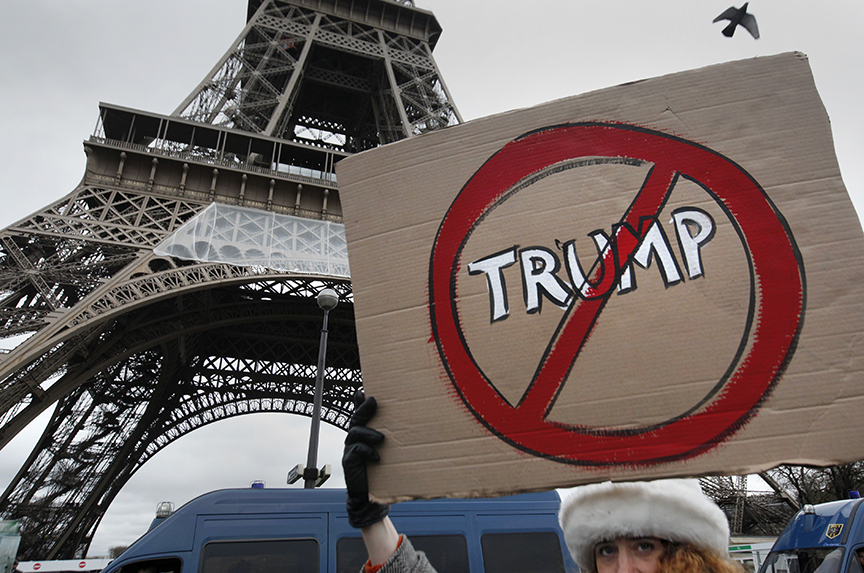This article is part of a series that reflects on the first year of the Trump administration.
Despite the fanfare surrounding US President Donald J. Trump’s June 1, 2017, announcement that he was pulling the United States out of the Paris Agreement there is a drawn-out legal process for withdrawing from the pact.

What was US policy prior to Trump? In 2015, heads of state from around the world gathered in Paris to finalize a non-binding, bottom-up climate change accord, the Paris Agreement. The agreement, which entered into force in 2016, now includes every country in the world, and is most notable for being the first climate pact to require all countries—including major emerging economies such as China and India—to monitor and report their greenhouse gas emissions levels, and to put forth plans for reducing these emissions. Targets and reporting are mandated, but compliance with these targets—as well as the policies put in place to achieve them—is not legally binding.
What has Trump said?
“The Paris Climate Accord is simply the latest example of Washington entering into an agreement that disadvantages the United States to the exclusive benefit of other countries, leaving American workers—who I love—and taxpayers to absorb the cost in terms of lost jobs, lower wages, shuttered factories, and vastly diminished economic production. Thus, as of today, the United States will cease all implementation of the non-binding Paris Accord.”
—US President Donald J. Trump in remarks at the White House on June 1, 2017.
In the East, it could be the COLDEST New Year’s Eve on record. Perhaps we could use a little bit of that good old Global Warming that our Country, but not other countries, was going to pay TRILLIONS OF DOLLARS to protect against. Bundle up!
— Donald J. Trump (@realDonaldTrump) December 29, 2017
What has changed? Nothing yet. Despite the fanfare surrounding the president’s Rose Garden announcement, there is a drawn-out legal process for withdrawing from the Paris Agreement that puts the earliest date for withdrawal at November 4, 2020—one day after the 2020 US presidential election. Until then, the United States remains party to the Paris Agreement, and US diplomats have attended—and are expected to continue attending—regular meetings in which work is progressed on the implementation of the Paris Agreement.
This is important because it means that the United States will continue to shape the early direction of the Paris Agreement and various guidelines for reporting emissions and ambitions, and also gives more time for US officials to become familiar with the Paris Agreement and the consequences of surrendering the metaphorical American “seat at the table.” There continue to be ambiguous indications that the United States may yet be convinced to stay in the agreement, under some sort of yet-to-be-clarified deal, prior to the date of official withdrawal, or may consider re-joining at a later date.
In response to Trump’s announcement, a bevy of city, state, corporate, and civil society leaders have announced new climate initiatives and formed new coalitions meant to compensate for the lack of commitment to the Paris Agreement at the federal level. The ultimate impact of this mosaic of pledges and programs is still unknown, but may represent a material change in the driving forces behind the US greenhouse gas emissions trajectory, and their relationship to policy out of Washington, in the years to come.
David Livingston is deputy director, climate and advanced energy, of the Atlantic Council’s Global Energy Center (@ACGlobalEnergy). Follow him on Twitter @DLatAC.

Image: Protesters rallied near the Eiffel Tower in Paris on February 4. US President Donald J. Trump announced on June 1 that the United States will withdraw from a historic Paris climate agreement that is intended to curb the harmful effects of global warming. (Reuters/Mal Langsdon)
